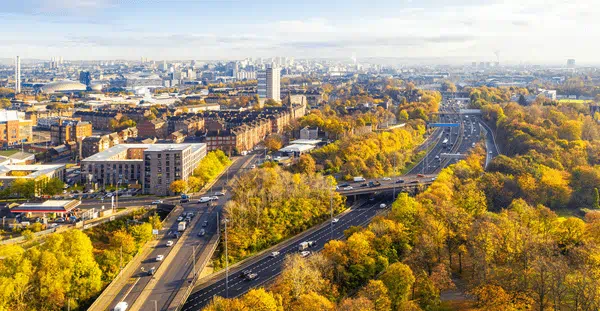- Placemaking
- Cities
- Government
- Urbanisation
Before the onset of COVID-19, Local Authorities were often the biggest new investors in our town centres and high streets, but there are pros and cons about them taking on this role. As we adjust to the reality of a new world, many of the trends we anticipated unfolding over the coming decades have been accelerated into the space of months or even weeks. But does this create more opportunity for Local Authorities to buy into the future of our town centres and high streets and, if so, how should they make the most of their investment?
Fragmented ownership is a barrier
COVID-19 has shown us the extent to which we need our town centres to become more liveable places. We need to design and create public realm with cycling and walking in mind; and we need to embrace the concept of more local neighbourhoods, where communities have everything they need within easy reach.
Often though, the biggest barrier to achieving this remains fragmented ownership along the high street. With no single controlling owner who can act and intervene at will, it is only through attempts to cajole, influence and drive collaboration that Local Authorities can deliver the scale of re-invention needed.
This can lead to significant delays, and sometimes permanent barriers as owners can’t make transformational changes alone, and multiple owners can compete more than collaborate. Contrast this with one long term, controlling owner that can be more responsive to the overall needs and wants of the local community. Outlet villages and single ownership shopping centres are able to quickly respond to changing customer expectations, and this could offer a model for our high streets and town centres too.
Local Authorities have a key role as custodians
In the absence of single, long term owners, another party – one without a purely commercial motive - often needs to intervene to support transformation. And it is really only Local Authorities who can step forward and play this role of ‘convener’ and ‘guiding mind’, with a holistic view of place.
This means that in one sense they are the natural choice as a long term benevolent commercial owner of place. Equally there are many good reasons why place ownership should be more dynamic and why many would argue that Local Authorities are exactly the wrong people to hold this control.
Should Local Authorities invest in high streets and town centres?
The Local Authority view on value is driven not just by commercial returns, but by wider community benefit, social value and economic impact. In the wake of COVID-19, the importance of place to our wellbeing - and the value we place on our town centres and high streets - will only grow. Articulating, measuring and capturing this value is critical in making the case to invest, but an eye on the commercial reality will still be needed.
The impact of the pandemic means we are likely to see some asset owners looking for an exit from properties where value has fallen or is likely to fall in the near term. When coupled with the financial pressure facing councils, and the perception that investment could generate much needed income, many Local Authorities are considering if, how and when to invest in their own town centres or high streets.
Calling the right time and place to invest is fraught with uncertainty, but perhaps never more than right now. There is also a question of what to invest in, assuming the purpose is to support transformation.
The most headline grabbing approach has been to invest in large single assets. For example, a shopping centre in a key location, where its loss to the town would be considered greater than the loss of any one single store. This single asset can play a key role in connectivity and the movement of people in and around a place and so, in this sense, is critical to long term transformation.
In other areas though, it may be preferable to invest in the periphery of a town centre. Here, ownership is more fragmented, values may be lower, and therefore the opportunity to leverage the Local Authority’s skills and powers to assemble land and perhaps repurpose peripheral retail areas to bring focus to the core may be more useful.
If Local Authorities do invest, how should they go about it?
Regardless of the decisions Local Authorities make about how, where and when to invest, if they chose to proceed, there are three key things to consider;
Don’t underestimate the challenges
Do robust due diligence
Have evidence backed business plans
Local Authorities have a unique role in town centres and high streets with the whole community as their client. In most cases they already own a vision of the future that is focused on their community and they are the coordinating force of redevelopment for the long term success of a place. It will be interesting to see the different approaches taken to this challenge and the impact they have over the coming years. Whatever Local Authorities do, they will be at the heart of the future of the high street and key to making our town centres and high streets liveable places.




